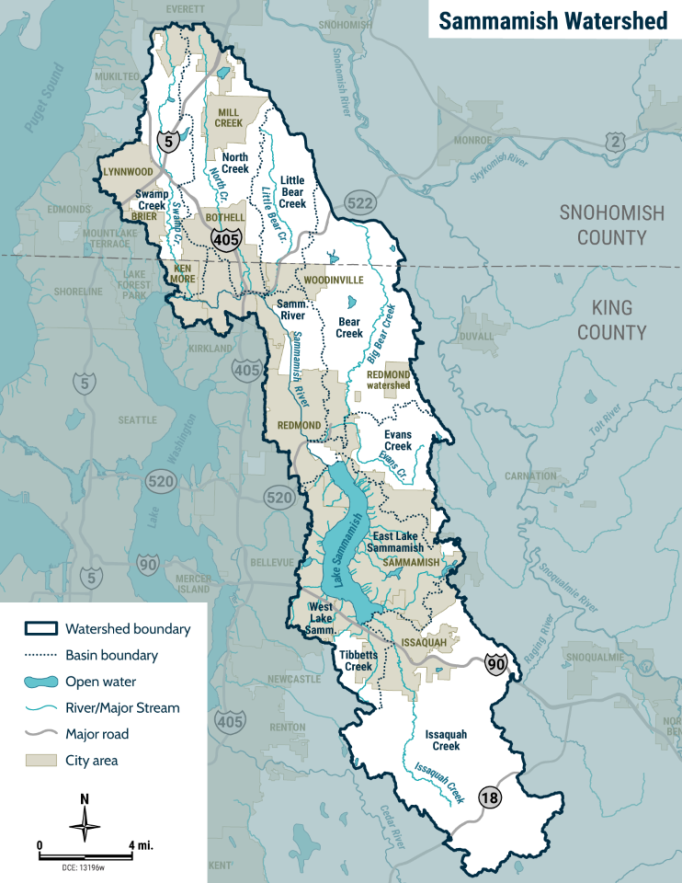Sammamish River Capital Investment Strategy
Project overview
The Sammamish River runs 13 miles between Lake Sammamish and Lake Washington. The river is a 1964 federal flood project that was called the Sammamish River Improvement Project. King County, as service provider to the King County Flood Control District, maintains the river’s flood risk reduction function, as guided by the 1964 Operations & Maintenance Manual.
Land use has changed along the Sammamish River since 1964. Regulations for river maintenance have become more complex. Projects that impact the river need special permission from both King County and the U.S. Army Corps of Engineers. Permits are also needed from other federal, state, and local agencies
The King County Flood Control District, together with the King County as service provider, is developing the Sammamish River Capital Investment Strategy (Sammamish CIS).The Sammamish CIS will provide an updated plan for meeting federal flood risk reduction, fish habitat, and navigation requirements for the Sammamish River. This update will enable the King County Flood Control District, King County, riverfront cities, tribes, and non-profit partners to better coordinate and prioritize capital projects and maintenance activities along the river.
The U.S. Army Corps of Engineers is partnering with the County on the Sammamish CIS. At the same time, the Corps of Engineers is updating the Operations and Maintenance Manual to address modern regulations. The CIS and Operations and Maintenance Manual update will have separate public processes.

Background
The Sammamish River Improvement Project was originally designed in 1964 to protect farmland in the spring and vacation homes on Lake Sammamish. The constructed channel is straighter and deeper than it was in the past. Remnants of the historic winding channel remain visible in aerial photography.
The Operations and Maintenance Manual outlines performance standards and maintenance requirements for the Sammamish River Improvement Project. Many of the requirements of the Operations and Maintenance Manual are no longer practical, because:
- Land use and environmental laws have changed since the time of project construction.
- They worsen water quality and damage migratory habitat for Chinook salmon that are protected by Tribal Treaty Rights, Washington State’s Priority Habitat and Species Program, and the Endangered Species Act.
Did you know?
The Sammamish River was once part of an ancient lake connecting Lake Washington and Lake Sammamish. For an interactive Sammamish River history experience visit the Sammamish River StoryMap.
Project goals
The goals of the Sammamish CIS are to:
- Develop a Capital Investment Strategy and maintenance plan that meets the flood risk reduction, fish habitat, and navigation requirements of the Operations and Maintenance Manual. Use a watershed approach to include Lake Sammamish, Bear Creek, Issaquah Creek, and Willowmoor Floodplain Restoration Project considerations. Ensure the Sammamish CIS reflects current jurisdictional boundaries and regulatory requirements.
- Work with partners to determine a strategy for implementing the 2002 U.S. Army Corps of Engineers Sammamish River Corridor Action Plan. The 2002 plan was developed to address habitat problems related to the original project design and construction.
- Initiate a U.S. Army Corps of Engineers update to the Operations and Maintenance Manual that will support implementation of these projects.
Capital investment strategy schedule
| Activity |
Date |
|---|---|
| CIS project planning phase |
2022 to 2023 |
| Plan development phase |
2023 to 2025 |
| District review and approval phase |
2026 |
| Project implementation begins |
2026 |

 Translate
Translate